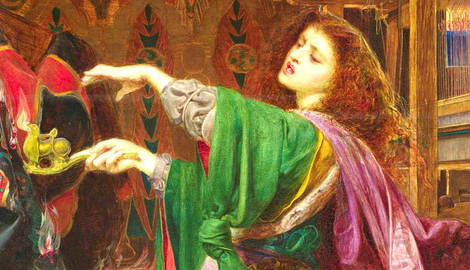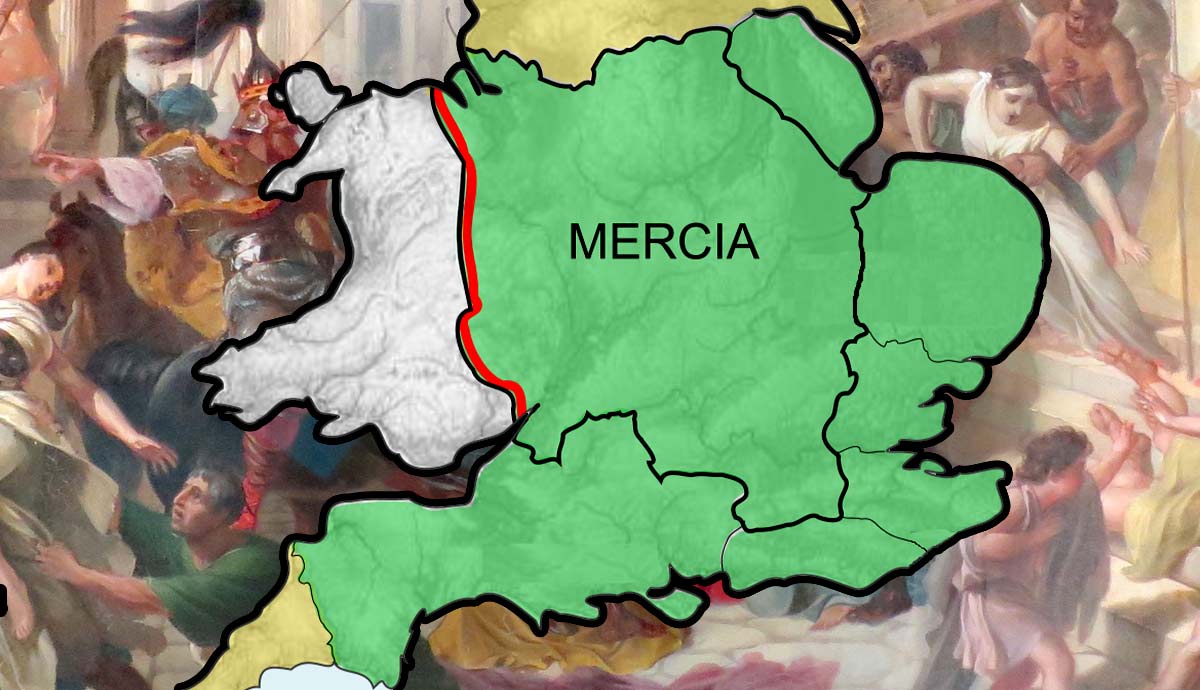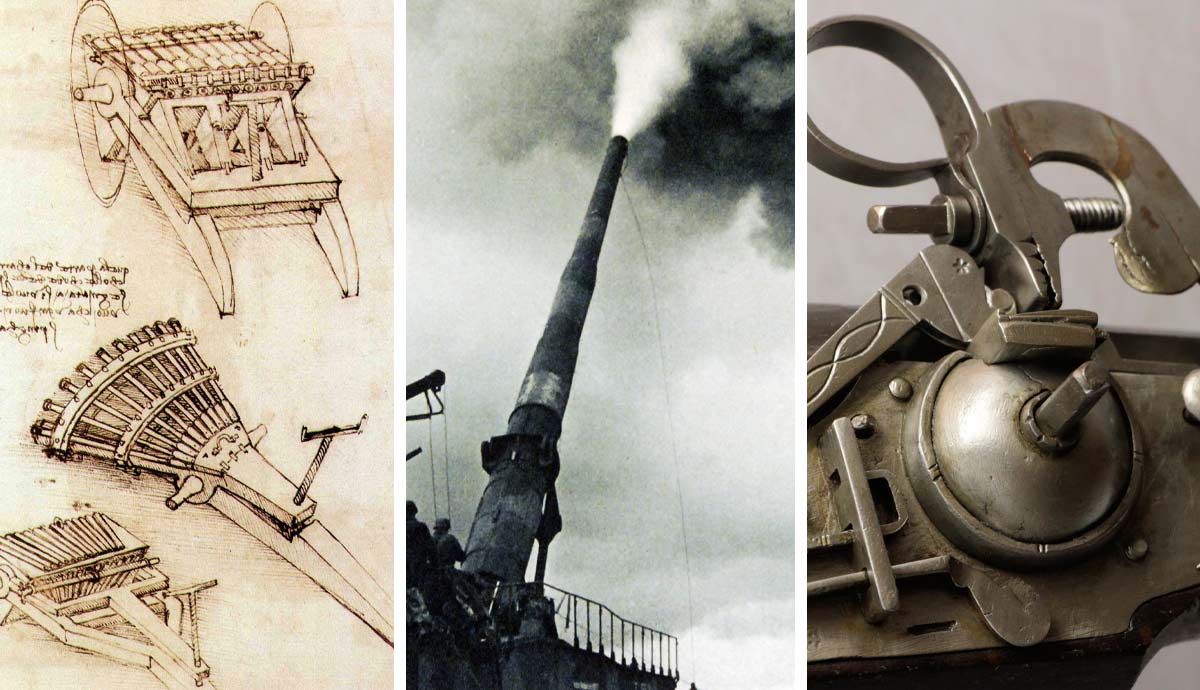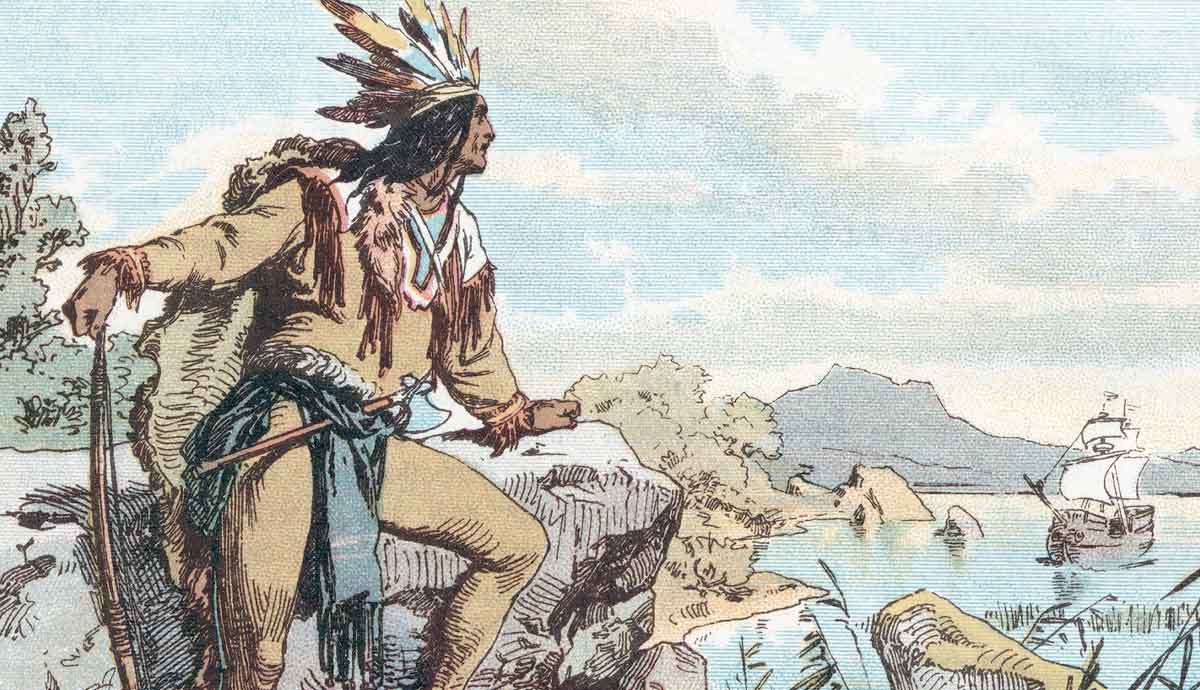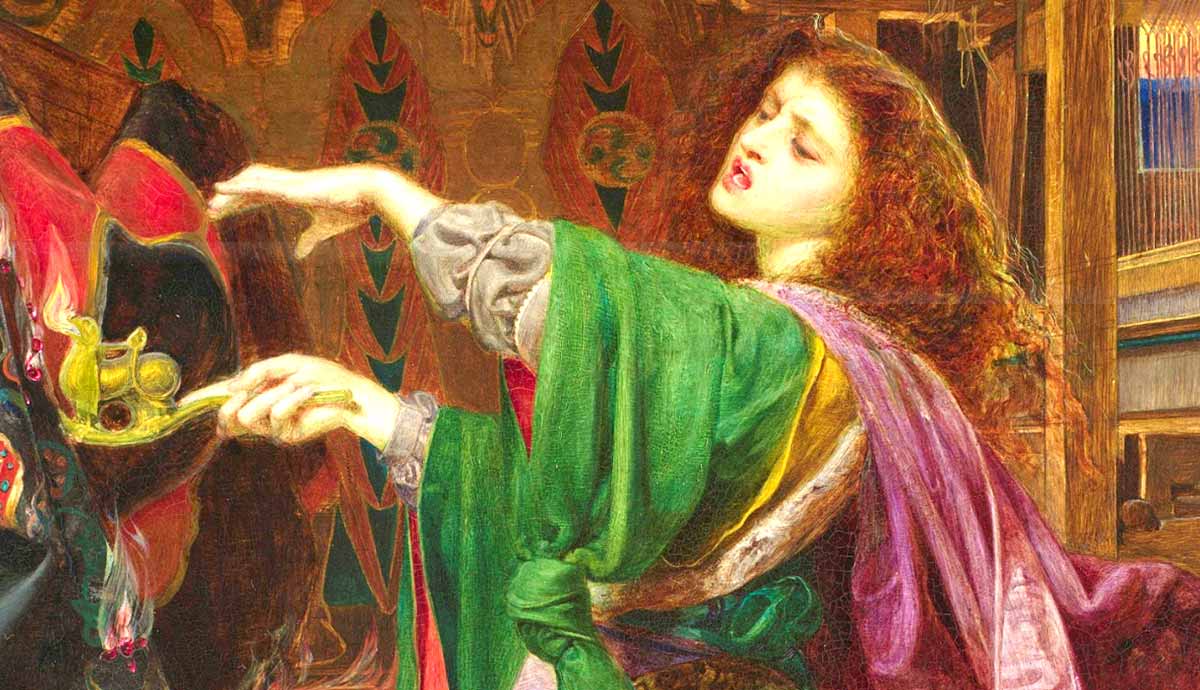
Today, one of the most popular characters from the Arthurian legends is undoubtedly Morgan le Fay. She is often presented as a cunning, alluring, evil sorceress who plots against King Arthur. While this basic description matches fairly well with some medieval portrayals of her, it is only part of her story. In fact, some versions of the Arthurian legend portray her as a thoroughly supportive ally of Arthur. In this article, we will analyze how the character of Morgan le Fay evolved over the centuries as the Arthurian legends developed.
The Famous Version of Morgan le Fay
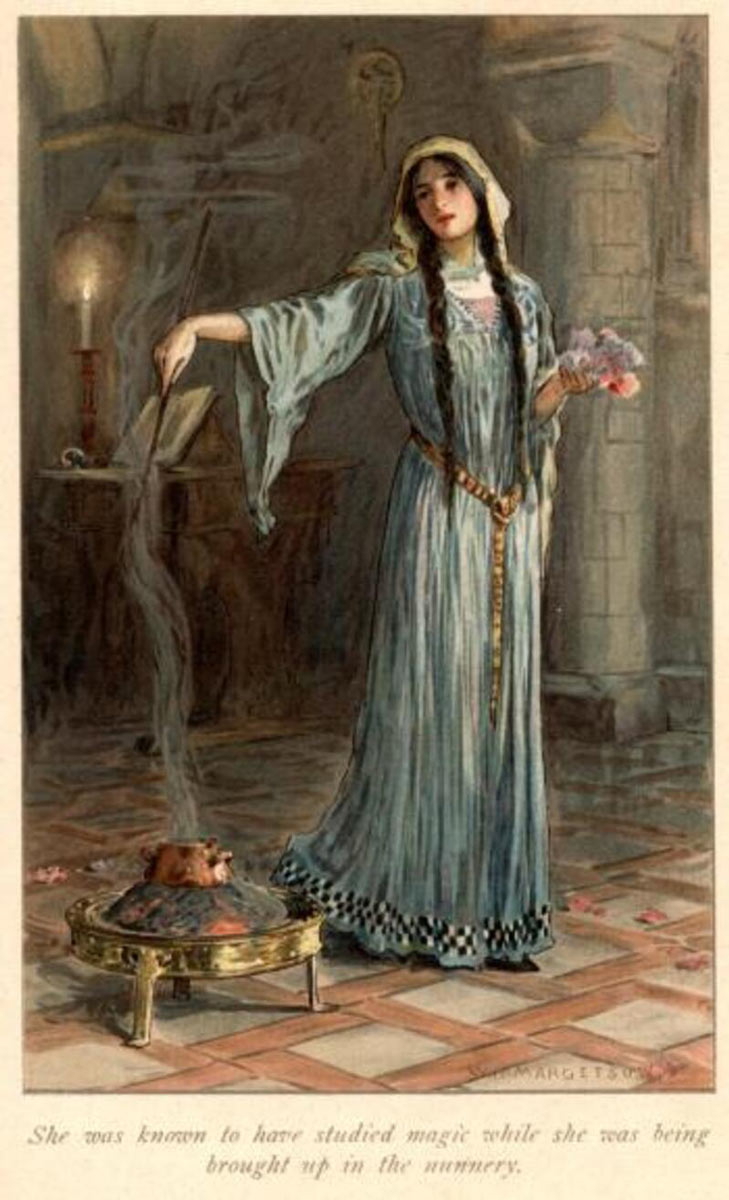
First, let us consider an overview of the character of Morgan le Fay as she is presented in the most well-known adaptation of the Arthurian legend. This is Le Morte d’Arthur, written by Thomas Malory in the 15th century. This English work remains the most influential version of the legend today. In this work, Morgan le Fay is portrayed as Arthur’s older half-sister. She is the daughter of Arthur’s mother, Igraine, by her first husband, Gorlois.
Malory presents Morgan as the source of considerable conflict during Arthur’s reign. She threatens Arthur’s rule in a number of ways, both directly and indirectly. She is presented as being essentially completely hostile to Arthur and evil in nature. She is a sorceress dealing with enchantments and potions. At the end of the story, Morgan has a sudden and unexplained change of behavior towards Arthur. After Arthur is mortally wounded at the Battle of Camlann, Morgan is one of the women who arrive in a boat to take him to Avalon to heal him.
Morgan le Fay’s Earliest Appearance
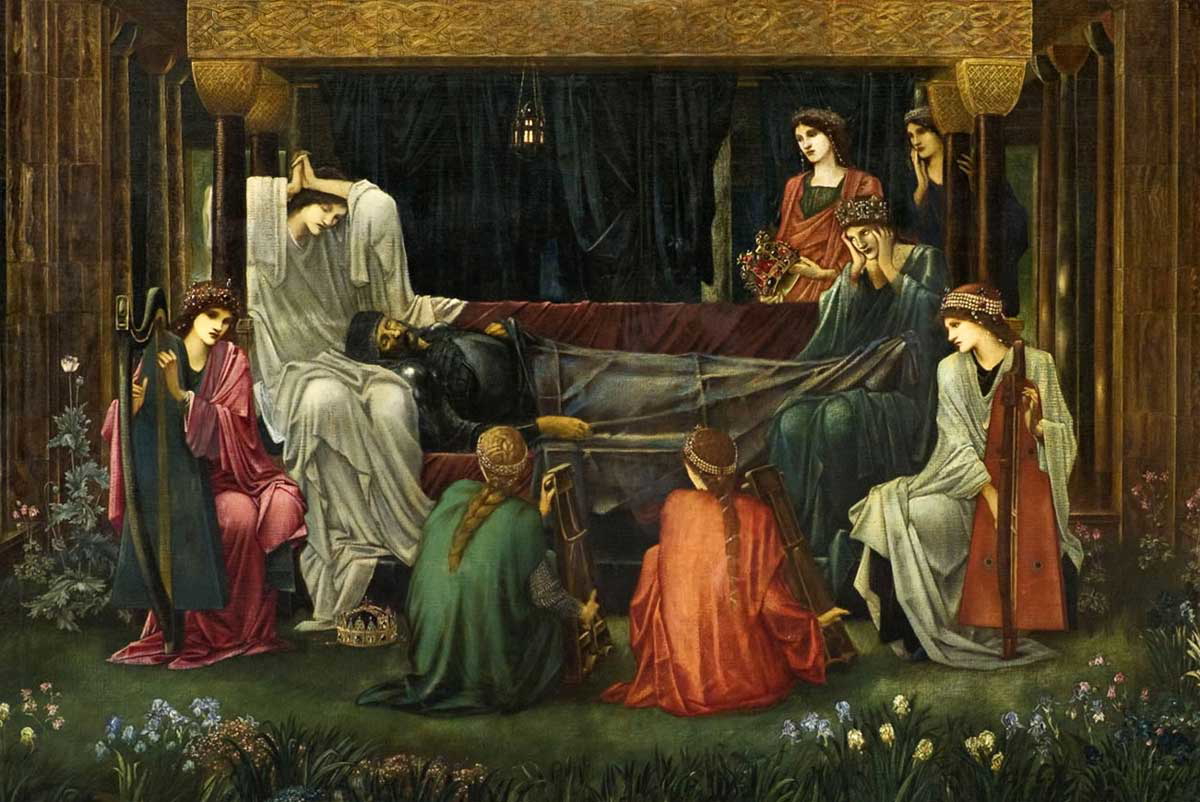
This portrayal of Morgan is very different from how she is shown in her first appearance. The very earliest surviving source to mention Morgan le Fay is Geoffrey of Monmouth’s Vita Merlini, or the Life of Merlin, written in c. 1150. This is somewhat of a sequel to his earlier and much more famous Historia Regum Britanniae. Here, Morgan only makes a brief appearance.
In a conversation between Merlin and Taliesin, the latter mentions that they had both taken the mortally wounded King Arthur to Avalon to be healed of his wounds. Taliesin remarks that the island was ruled by nine sisters, the chief of which was the eldest, Morgen. She is described as being the most talented in magical arts of all the sisters, as well as being the most beautiful. Furthermore, she had the powers of shape-shifting and healing. She is also said to have been able to fly, enabling her to travel all over Britain and even to France as she pleased. Taliesin also indicates that she was well educated, having taught mathematics to her sisters.
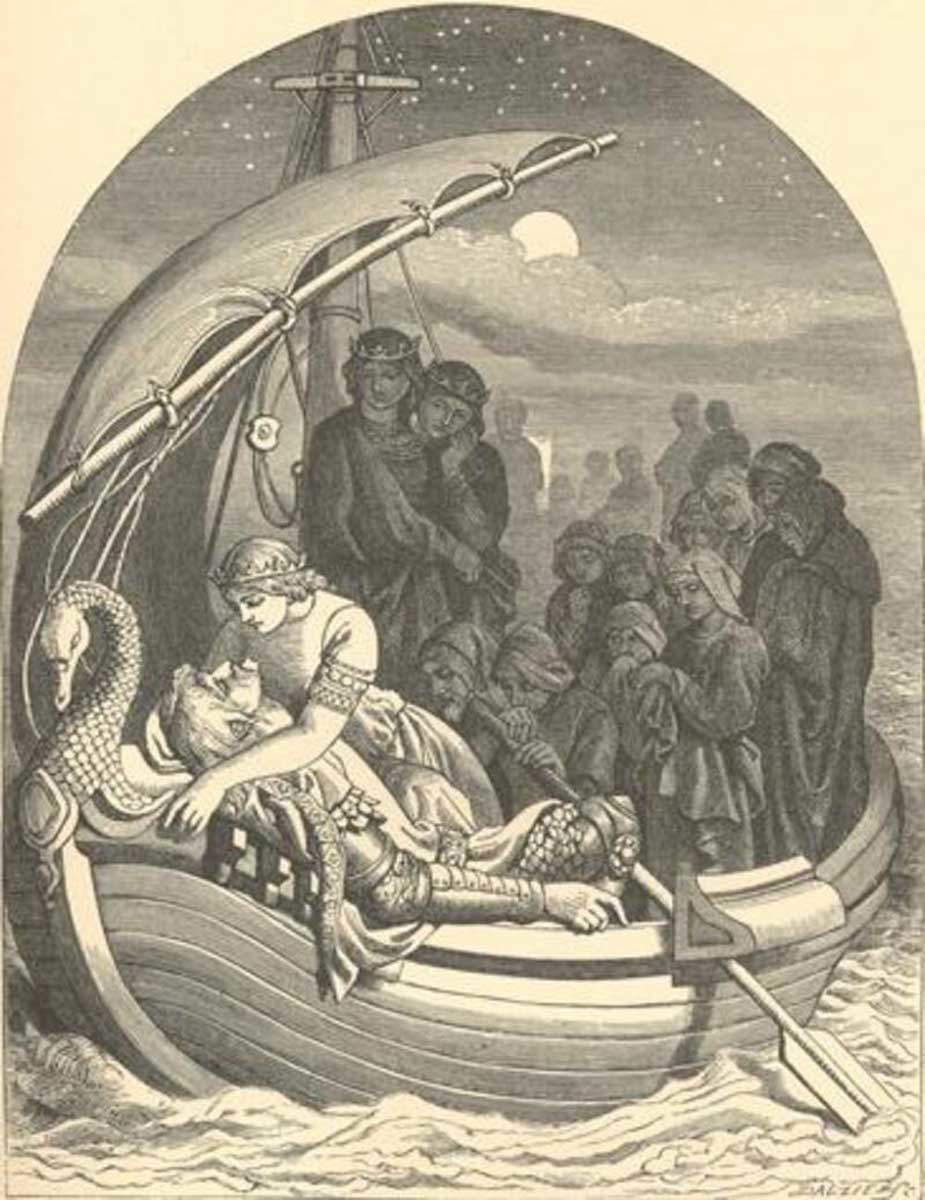
What role does Morgen play in Arthur’s life in this early account? Since Taliesin explains that he and Merlin took Arthur to Avalon to be healed, and Morgen was the most talented healer, this obviously points to her as the principal healer of Arthur. There is nothing in the account to suggest that she was hostile or in any way a force for evil. As Taliesin explains:
“We arrived there with the prince; and Morgen received us with due honour. She put the king in her chamber on a golden bed, uncovered his wound with her noble hand and looked long at it. At length she said he could be cured if only he stayed with her a long while and accepted her treatment. We therefore happily committed the king to her care and spread our sails to favourable winds on our return journey.”
While this does not reveal the eventual outcome, it does definitely paint Morgen in a positive light. Geoffrey does not reveal anything else about Morgen.
Morgan’s Evolving Character
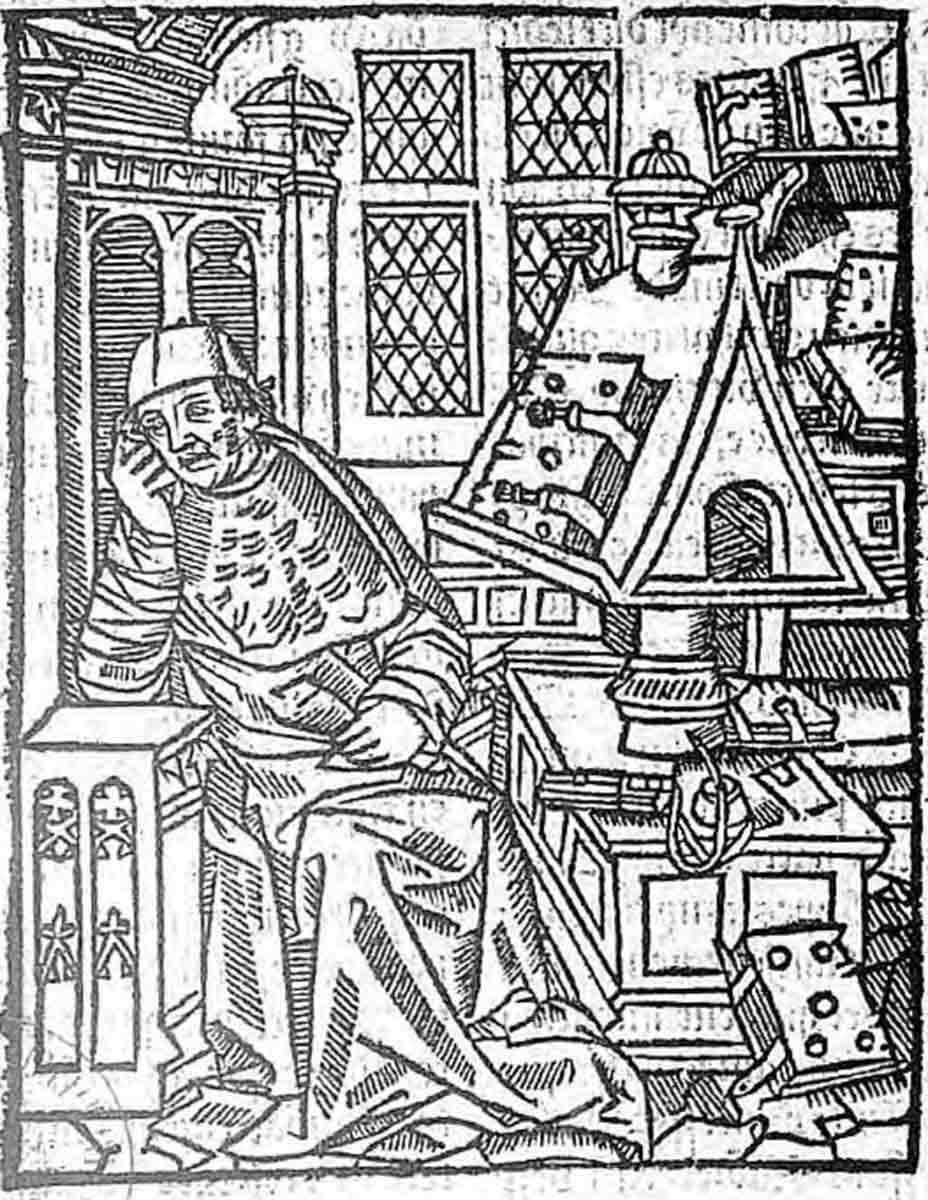
As we can see, Geoffrey of Monmouth’s portrayal of Morgen is decidedly different from the famous Morgan le Fay from the later versions of the legend. How did Geoffrey’s benevolent healer become an evil sorceress? The next known source to mention this character is Roman de Troie, written in c. 1155-1160. This made her a fairy who hated Hector because he did not love her back. Nothing more about her is mentioned.
More significantly, Chretien de Troyes wrote about Morgan in c. 1168, in Erec et Enide. She is portrayed as a companion, possibly a romantic one, of Guigomar, the ruler of Avalon. This is consistent with Geoffrey’s portrayal while also expanding on it. Another detail that Chretien adds is far more significant, and it is a major part of her character today. He calls her Arthur’s sister. There is not a single hint of this in Geoffrey’s earlier work, so we do not know where Chretien took this idea. It might simply have been his own invention.
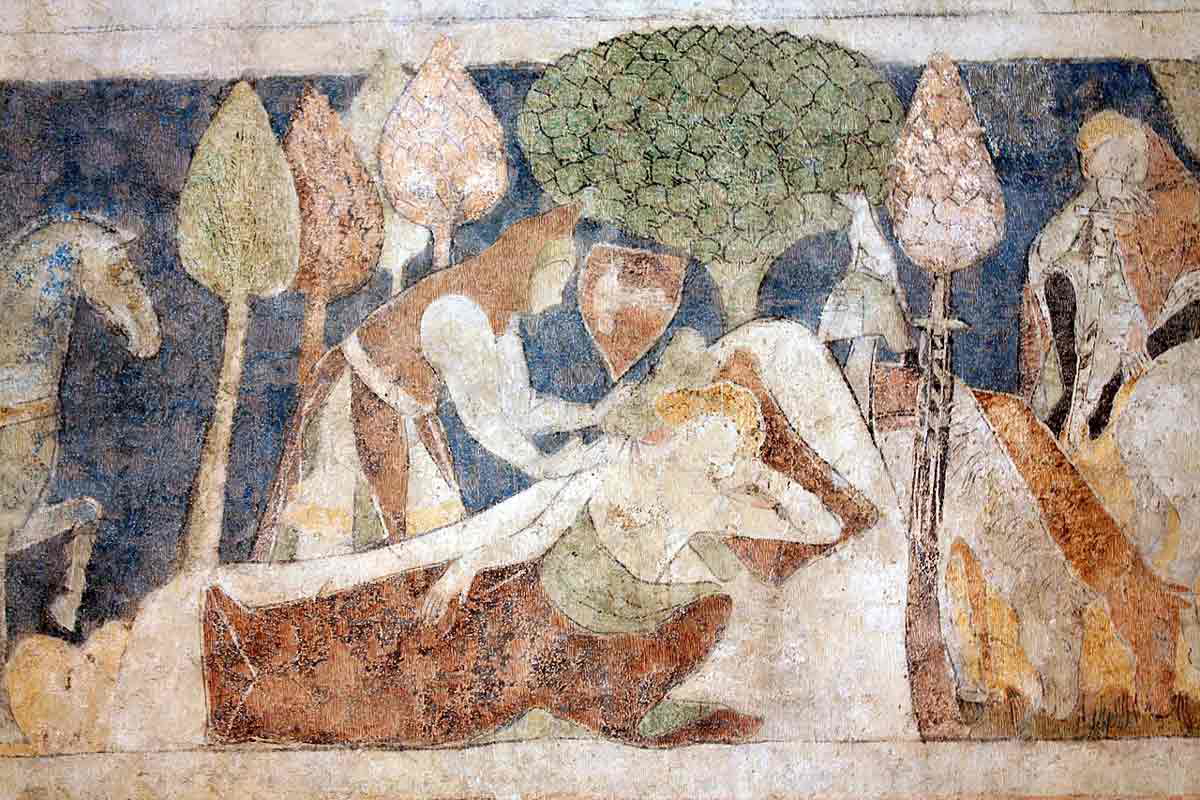
Therefore, Morgan’s evolution into the sister of Arthur had already happened less than 20 years after Geoffrey first wrote about her. There are various other references to her over the next few decades. However, it was not until the Vulgate Cycle of the 13th century that she began to adopt evil characteristics. It was also at this stage that she was made the half-sister of Arthur, being the daughter of Igraine by her first marriage.
One of the primary sources of hostility between Arthur and Morgan in the Vulgate Cycle is a conflict that occurs between Morgan and Guinevere, Arthur’s wife. Morgan is portrayed as the wife of either King Nentres or King Urien. Guinevere discovers Morgan having an affair with Guiomar (Chretien’s Guigomar) and puts a stop to it. Guiomar and Morgan both leave Camelot. This is what begins Morgan’s undying hatred of Guinevere and, by extension, King Arthur. She then goes to Merlin to become an expert in dark magic.
The Welsh Origin of Morgan le Fay
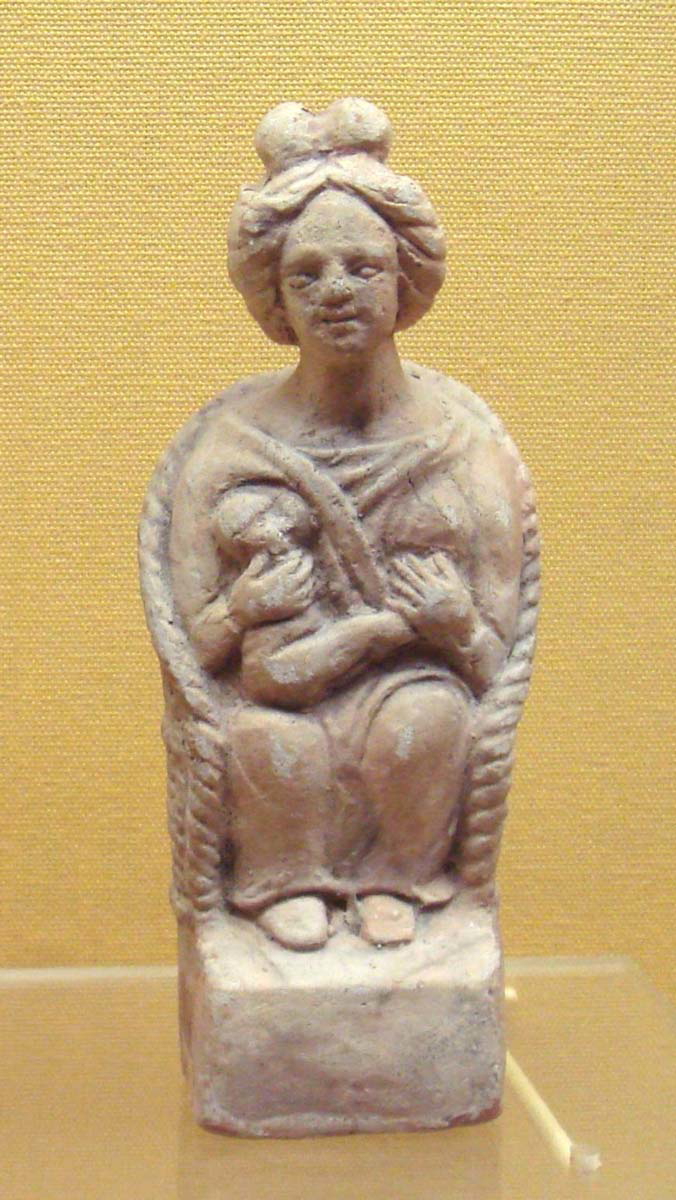
Now that we have seen how Morgan evolved from the benefactor of Geoffrey’s Life of Merlin to the evil sorceress of Malory’s Le Morte d’Arthur, let us examine the other direction. Are there any traces of Morgan from before Geoffrey’s account? There is indeed no prior record that explicitly refers to her by that name. However, there does appear to have been one or more Welsh precedents for her character in earlier tradition.
In Preiddeu Annwn, we find an earlier version of the account of Arthur going to Avalon. In this version, Avalon is called Annwn (a common equivalence in medieval Welsh texts), and Arthur is portrayed as going to it for conquest, not for healing. At Annwn, there are said to be nine magical maidens. While Morgan is not singled out, it demonstrates the existence of the basic tradition about her and her sisters.
A possibly unrelated character was Modron, considered to be an evolution of the Celtic goddess Dea Matrona. She appears in Welsh tradition as the lover of Urien, just as Morgan is made the mother of Urien outside of Welsh texts. Were Modron or the Welsh goddess Matrona originally associated with the nine maidens of Annwn? Or were they originally two distinct concepts that were combined together in the formation of the figure of Morgan le Fay? Put simply, we do not know.
How an Ancient Priestess Contributed to the Legend
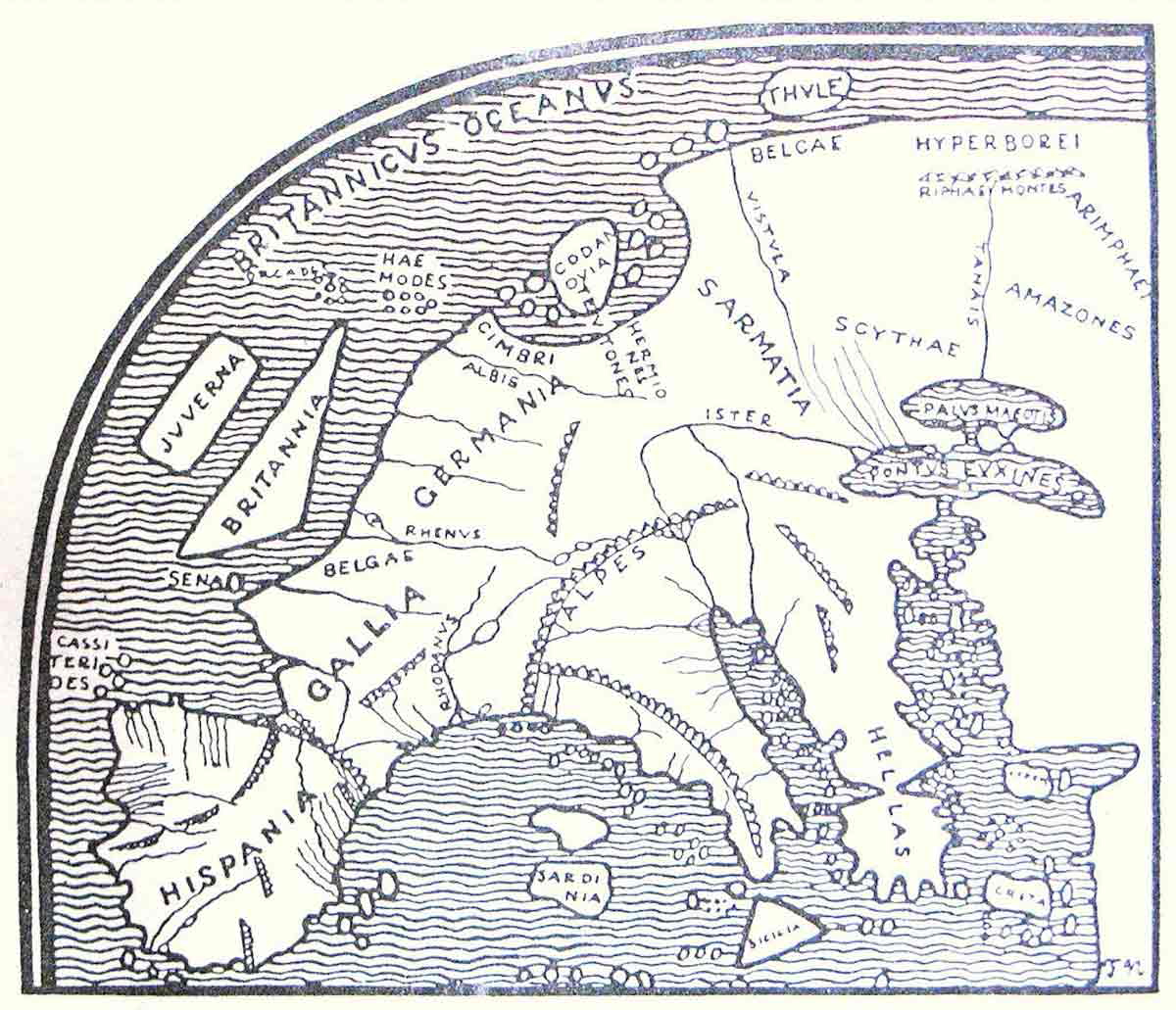
Although we do not know whether these two concepts were originally connected, they both date to long before the Arthurian era. If Modron does come directly from the Celtic goddess Matrona, as seems likely, then this would mean that we can trace her figure right back to at least as early as the 1st century BCE.
Similarly, the concept of nine maidens on a special island to the west can be traced back at least as early as the 1st century CE. In the writings of Pomponius Mela, in c. 43 CE, he mentioned that the Isle of Sena (Île de Sein) was dedicated to a Gallic divinity. He says that there was an oracle on the island, with nine priestesses with special powers, including shape-shifting and healing. While the priestesses were, of course, humans, could it be that the Gallic divinity whom they served was Matrona? We can only speculate. In any case, whether Matrona and the nine priestesses were originally connected or not, both these aspects of Morgan le Fay can be traced back to about the same period.
What We Know About Morgan le Fay, King Arthur’s Sorceress
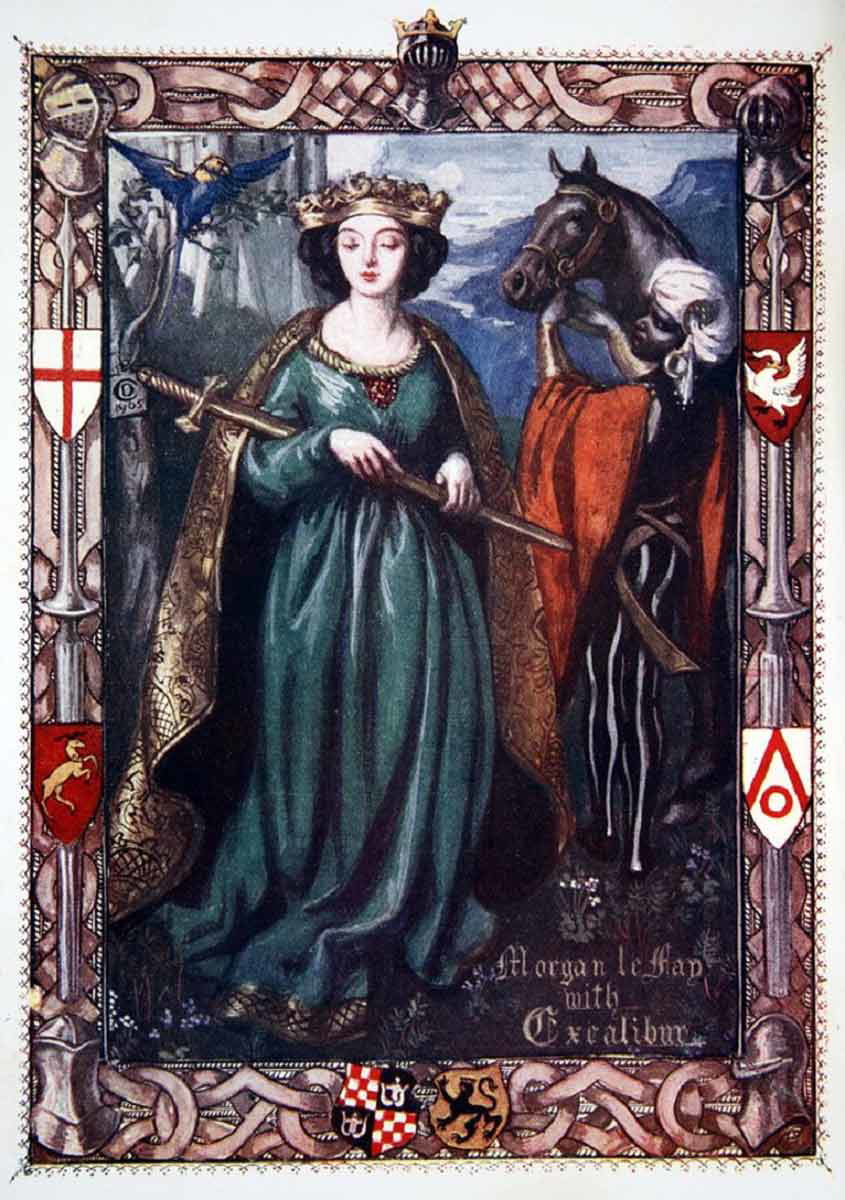
In conclusion, we can see that Morgan le Fay evolved significantly over the course of the development of the Arthurian legends. In her first appearance, in Geoffrey of Monmouth’s Life of Merlin, she rules Avalon with her eight sisters. She is a benefactor to Arthur, promising to use her healing powers to help him. As the legends evolved, she became Arthur’s sister and then his older half-sister. Eventually, by the time we get to Malory’s Le Morte d’Arthur, she has become a thoroughly evil character. She is a sinister force for evil, scheming against Arthur.
The origin of this character can be traced back partially to the Celtic goddess Dea Matrona through the Welsh figure of Modron. Perhaps her primary origin, which may or may not be connected to the aforementioned, can be placed on the Île de Sein. Here, there were allegedly nine priestesses who served a Gallic divinity to whom the island was dedicated.
